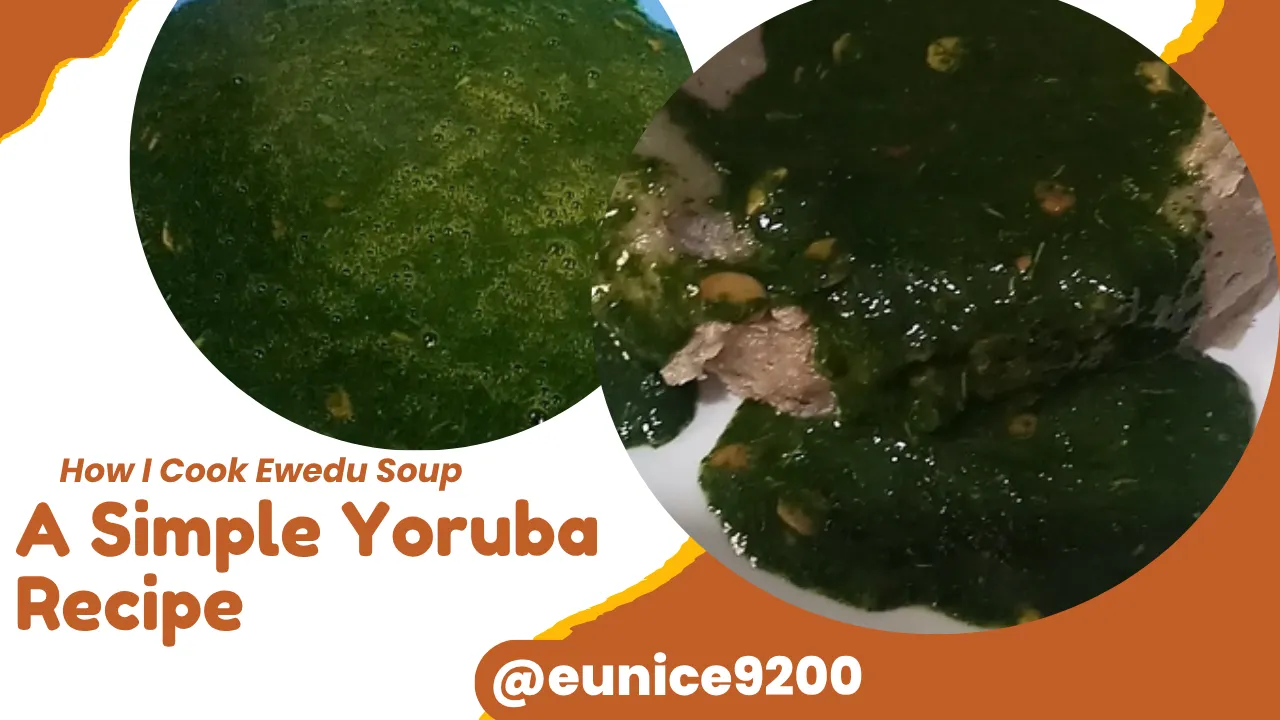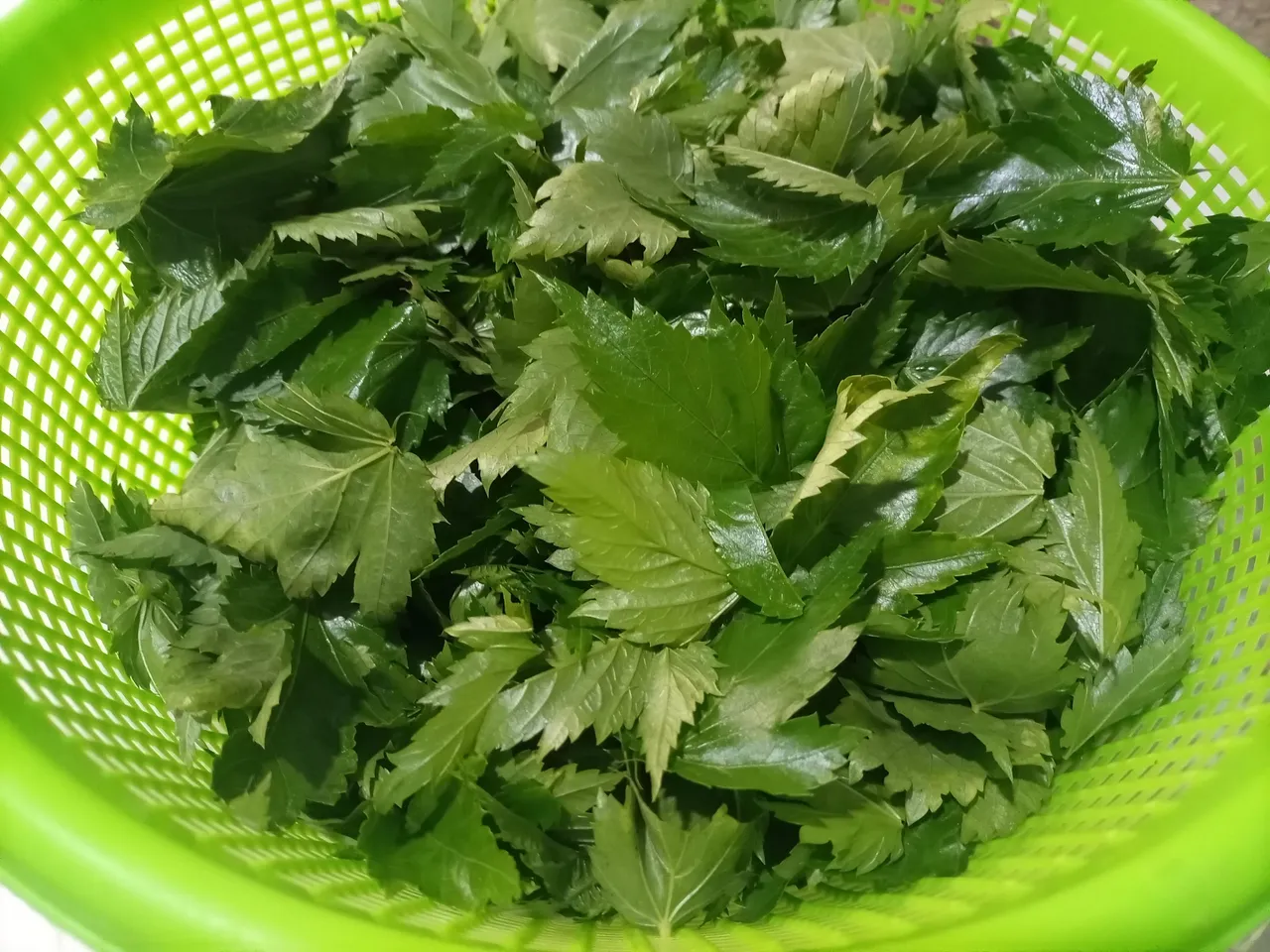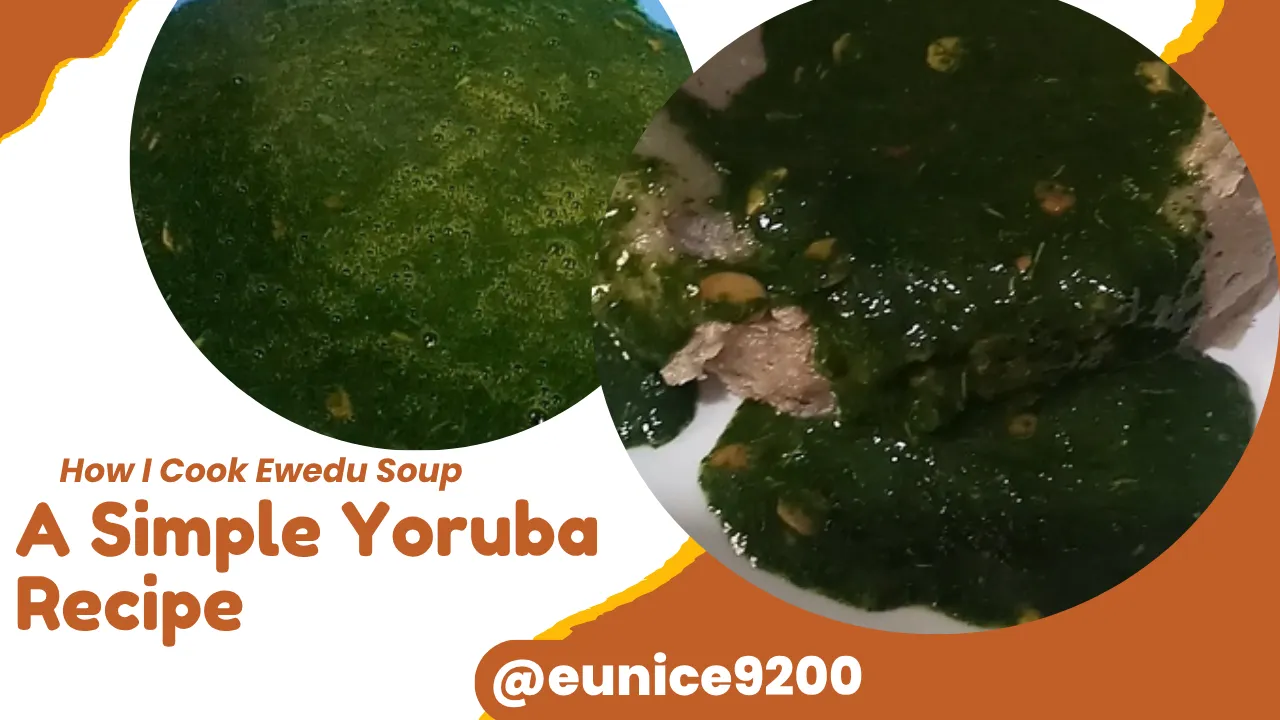
I welcome you all to another episode of hivelearners creative Sunday, I wish you all a happy new month and prosperous week, today I would be taking you to my source because I'm preparing one of my favorite local soup which is ewedu which is also known as JUTE LEAVES
Ewedu soup is one of the Yoruba local soup. This soup is very popular among the Yoruba people in Nigeria. It is simple to prepare and goes well with amala, eba, fufu, it is majorly prepare for swallow just like our regular okro soup. I love to cook my own ewedu the way my mother taught me, though the whisking part may be stressful but it worth it, also I love using traditional ingredients like iru, potash, and a local broom called ijabe. If you’ve never made this soup before, don’t worry. Just follow my steps and you’ll get it right.
INGREDIENTS USED
💕Fresh ewedu leaves (jute leaves)
💕Water
💕A pinch of potash
💕locust beans
💕Salt
💕Seasoning cube
💕Ijabe (traditional broom whisk)
💓STEP 1
The first thing you want to do is pick your ewedu leaves from the stem. It always comes with stem, so you have to remove the leaves from the thick stem and keep only the soft leaves. After picking, rinse the leaves well with clean water. I usually rinse it two or three times to remove any sand or dirt and slice it into small portions and leave it in my strainer to drain out excess water in it

💓STEP 2
I Put my pot on the gas and pour in some water. This leaves do not need too much water to cook, just little water because if the water is too much it won't bring out that slimmy texture, I added little water and allow it to boil, when the water starts to boil, I added the jute leaves with the little potash, I used my turning stick to break out small portion of the potash shown in the video, I didn't use everything, Potash helps to soften the leaves and bring out that stretchy, drawy texture we love in ewedu. Be careful not to add too much potash, just a pinch is enough.
💓STEP 3
After adding the potash and the jute leaves I let it cook for about 5–7 minutes. You’ll see the leaves becoming soft and the color turning darker. Don’t overcook it so you don’t lose the nutrients.
💓STEP 4
Now it’s time to use the traditional broom whisk called ijabe. This is the fun part, there is a broom design specifically for this soup, it is always a new broom and not the regular one we use at home, I removed the pot from the fire and start whisking the ewedu with the ijabe inside the pot. You will notice it becoming smoother and stretchy as you mash it. If you don’t have that broom you can use a blender to blend the leaves smoothly, but trust me, that broom gives it that local feel and taste.
💓STEP 5
After I'm done whisking and the soup is smooth, I put the pot back on low heat and added locust beans. I love adding locust beans because of the nice native smell and taste it gives the soup.
I allow it to cook for another 2–3 minutes. At this point, I added a pinch of salt and half seasoning cube, but it’s not a must. Some people like it plain and simple, especially if they are serving it with rich stew and meat.
💓STEP 6
Your ewedu is ready. You can now Serve it with your stew and hot amala, eba, fufu, depending on what you have at home. In my house, we mostly eat it with amala and stew with meat or fish.
Ewedu is not just a soup, it’s comfort food. It’s quick, easy, and full of health benefits. Jute leaves are rich in fiber, vitamins, and iron. So apart from enjoying the taste, you are also feeding your body with something good.
Thanks for watching the video
▶️ 3Speak
